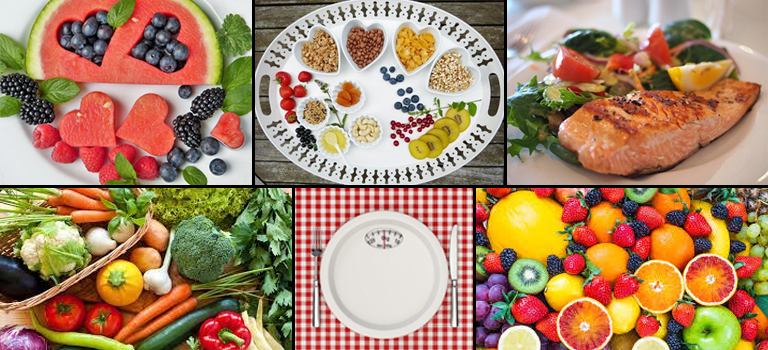The term superfood has received much attention lately.
But what exactly is a superfood and what makes one food more superior than the next.
In the simplest of terms, a superfood is a food that is packed with vitamins, minerals and antioxidants and offers maximum nutrition with minimal calories.
Superfoods are good for everyone, but what about for those living with diabetes?
Is the impact different? Are there certain foods to watch more closely?
Let’s explore common superfoods first and then we’ll take a look at how they impact diabetes.
The Most Common Superfoods
While a quick Internet search will yield over 29 million results in .74 seconds all with slight variances, here is a quick list of the 7 most common superfoods as outlined by Harvard University.1,3
- ● Berries
- ● Fish
- ● Leafy Greens
- ● Nuts
- ● Whole Grains
- ● Milk and Yogurt
- ● Legumes
Superfood Health Benefits
“Studies have shown that superfoods help prevent many diseases, like coronary heart disease and cancer, as well as improving immunity and decreasing inflammation. The nutrients contained in superfoods also help to promote a healthy complexion, increased energy levels and a healthy weight.”2
Role of Superfoods in Diabetes Management
The good news is that superfoods play a similar role when it comes to diabetes. The same superfoods provide many of the same benefits to those living with diabetes. The key is management and portion control. Too much of any food, even a superfood, can affect blood sugar and cause fluctuations in levels. That’s why it’s important to monitor food intake closely and understand the impact that the same superfoods mentioned above can have on patients living with diabetes.
- ● Berries. Blueberries, strawberries and blackberries are packed with antioxidants and vitamins like vitamin C that can help cure a sweet craving.
- ● Fish. Salmon and other fish containing Omega-3 fats can help reduce the risk of heart disease and other issues.
- ● Leafy Greens. Greens like spinach, kale, and broccoli are low in calories and can help act as a healthy filler.
- ● Nuts. A good source of fat and protein that helps to stay fuller longer.
- ● Whole Grains. Examples of whole grains are whole oats, quinoa, barley and far which are great sources of fiber which can help to equalize blood sugar.
- ● Milk and Yogurt. Sources that are low in fat and added sugar help to provide Vitamin D.
- ● Legumes. Foods like pinto, kidney and black beans are packed with vitamins and are high in fiber which is good for absorption.
Ways to Monitor Blood Glucose Levels
The Plate Rule. Living with diabetes doesn’t mean giving up any type of food completely. Eating in moderation is the key. The plate method is an easy way to ensure a balanced meal and is based on the premise that each meal should be filled with 50% vegetables, 25% starch and 25% protein. Budgeting food and being conscious is a sure-fire way to get through each day.
Glycemic Index. “The Glycemic Index (GI) measures how a food affects blood sugar. Foods that are low on the scale raise it slowly. Those high on the scale raise it quickly. Eating mostly low-GI foods can help control blood sugar. For example, an orange has a GI of 52 but a Glycemic Load of 4.4, which is low. A candy bar has a GI of 55 but has a GL of 22.1, which is high. A large serving of a low-GI food will usually raise your blood sugar as much as a small amount of a high-GI food”4 It’s important to understand the details, read food labels carefully and know how certain foods affect blood sugar levels.
Continuous Glucose Monitor. A CGM gives users the freedom to know exactly how food will affect glucose levels. That knowledge is power and can help plan the rest of the meals throughout the day so glucose levels can be kept in check at all times, even while sleeping. CGMs, like the FreeStyle Libre, captures 14 days of data and stores the information for up to 90 days so it can help to serve as a food diary and help plan meals. This data can also be shared with healthcare professionals and caregivers to identify patterns and ensure that patients are maintaining a balanced diet, setting goals, tracking progress, and maintaining target ranges. Continuous Glucose Monitors provide real-time, accurate information and help to identify how superfoods affect the overall plan.
Food Education and Resources
While it may seem simple enough, food education and knowing how superfoods affect blood sugar levels is important. Through careful planning and by monitoring the data, people living with diabetes can choose from a variety of foods.
Quest Health Solutions is here to support you during this superfood journey and always. We are committed to providing diabetes education to our patients and healthcare providers. To learn more about how Continuous Glucose Monitors can help you incorporate superfoods into your daily meal plan, contact us at 1-800-993-9996, ben@questhealthsolutions.com or schedule an appointment today.
1. (2020) Harvard Health Publishing. Superfoods to Boost a Healthy Diet available at Click Here accessed on 15 April 2022.
2. (2019) Medical News Today. What are Superfoods and Why Should You Eat Them? Available at Click Here accessed on 15 April 2022.
3. (2022) American Diabetes Association. What Superstar Foods are Good for Diabetes. Available at Click Here accessed on 16 April 2022.
4. (2020) Mayo Clinic. Nutrition and Healthy Eating available at Click Here accessed on 16 April 2022.

